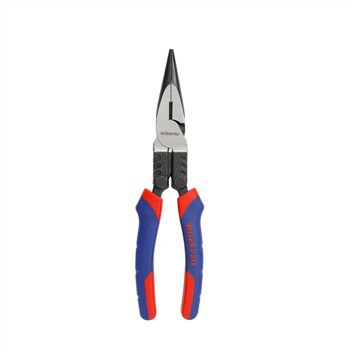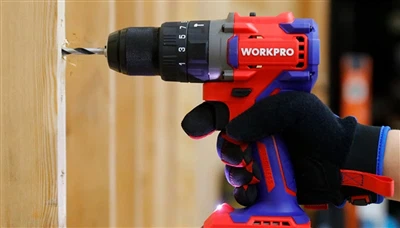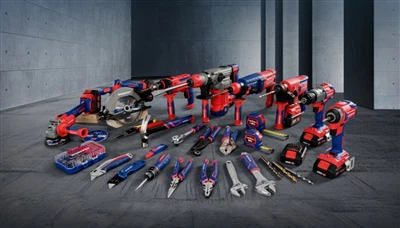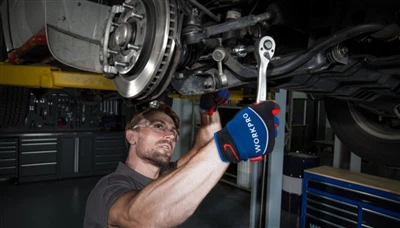
In the blacksmith trade, a hammer is perhaps the most crucial instrument you will need. A lot of people wonder how much of the hammering force comes from the person wielding it, and how much comes from the hammer itself. In this blog, I'll explain what the optimal weight for a blacksmith hammer is, what a blacksmith hammer is used for, as well as which hammer is best for your skill level and expertise in forging metal.
1. What Is the Best Weight of a Blacksmith Hammer?
For a cross or ball-peen hammer, a blacksmith hammer should weigh between 0.9 and 1.4 kilograms (0.9 and 2.9 pounds). When using a hammer, make sure it's at least 1.5 pounds (0.7 kg) to give your swings some oomph, but heavier is better.
2. What Is the Purpose of a Blacksmith Hammer?
The primary function of a hammer while forging is to move and shape the metal in the direction you desire. The hammer still has a vital impact in determining the path of the metal, even if you use a die. To determine which hammer style and function best suit your needs, it is vital to evaluate and assess the various hammers you have at your disposal.
3. Hammers for Blacksmithing
Some may believe that because "a hammer is a hammer," all hammers work in the same way. Blacksmithing, on the other hand, is not like this. Blacksmiths are known to employ a few key hammers in order to get the finest results during forging. It is important for blacksmiths to know their own degree of competence and strength before they purchase a hammer of a certain size and weight.
The following are the various types of hammers:
• Ball Pein hammer - A hammer with a spherical pein. It is mostly used to round the edges of pins and fasteners. It's also used to seal rivets and shape metal.
• Cross Pein Hammer – In its application, this hammer is extremely similar to the ball pein. However, it is best suited for shaping soft and/or softened metals.
• Sledgehammer/Blacksmiths – This hammer is a type of sledgehammer that is usually used for shaping red-hot steel on an anvil. The hammer's second head is somewhat tapered and rounded.
• Power hammer - This is a stationary forging hammer that runs on compressed air. It hammers and forms the material by moving a big piston up and down. It is most commonly used to forge steel.
• Welding hammer – Also known as a chipping hammer, this hammer features a round chisel on one end and a vertical pein on the other. The spring-like handle aids in the reduction of heat during the welding process. This hammer is typically used to remove slag after the weld bead has cooled.
It is crucial to note that not all hammers are used for the same thing when forging metal. They are utilized in a variety of purposes, so while choose which hammer to use, consider what you will be utilizing the hammer for.
4. What Is the Best Forging Hammer?
There is a great dispute in the blacksmith world about which type of hammer is ideal for general use. Many people believe that the Ball Pein hammer is the greatest choice because it may be used in more than one area of forging. However, depending on the project, you may want to consider using more than one sort of hammer.
5. The Purpose of Each Hammer
All forging hammers are designed to shape metal in a specific direction. You may want to examine the additional applications that certain hammers can be used for than simply shaping metal, depending on factors such as your project's time period or the sort of metal you are forging with.
Here are a few examples:
• Power Hammer – Since this hammer operates automatically rather than manually, it has the potential to accelerate the forging process. This could be handy if your project has a deadline or if you are unable to devote vast amounts of time to hammering manually.
• Welding Hammer - Because its function can be applied to more than one area of forging, this hammer is a good option for a number of tasks. The spring-shaped handle aids in lowering the heat of the forging metal, speeding up the welding process. The hammer's toothed function can be used to remove residual slag from your metal object, which helps to speed up the cleanup procedure.
The alternatives listed above are suitable for tasks that require a more precise weld or a faster rate. However, it is crucial to realize that the usage of a power hammer will not necessarily boost your forging skill by itself. As a result, if you are a beginner or a hobbyist, you may want to consider a hammer that relies more on personal talent.
Now that you've examined your alternatives for which hammers to employ, it's critical that you evaluate your options based on the kind of forging you're comfortable with.
6. Forging Techniques
Every blacksmith works at their own degree of comfort, and their forging style may change over time as they gain more experience. When selecting the correct hammer, it is critical to select a hammer that is not overly tough to wield. This is especially true for newcomers and enthusiasts.
A blacksmith will normally hold the hammer further away from their head while using a lighter hammer (often around 2.5 lbs (1 kg)). This allows them to impact the metal with greater velocity, generating the appropriate amount of force on the metal. This demands a little more upper-body strength.
Blacksmiths that utilize a heavier hammer will typically prefer a 3.5lb (1.5kg) or 4.5lb hammer (2kg). They employ a slower motion, allowing the hammer weight to do more work, and they hold the hammer closer to their head.
It is often recommended to start with a hammer weighing about 3-3.5 lbs (1.5 kg), as it is a rather neutral weight that is neither too heavy nor too light. Depending on which form of forging suits you best, you may lean toward a huge and heavy or tiny and lighter hammer as you advance your forging skills.
The WORKPRO Ball Pein Hammer, which is available in a variety of weights up to around 3 lbs, is a recommended neutral weight hammer. This hammer is specifically designed for minor tasks, so if you are a hobbyist or smith on the side, regardless of the type you want to employ, this is an excellent choice. If you want to acquire a variety of WOKPRO Hammers, please go to: https://bit.ly/3znc7PT.
WORKPRO manufactures a variety of hammers, including claw hammers, machinist hammers, ball pen hammers, stone hammers, and dead blow hammers. WORKPRO Machinist Hammer, Ball Pein will be discussed as Family I in this blog and the rest of the hammers will be discussed as Family II in the next blog.
7. WOKRPRO Hammers
7.1. Machinist Hammer

It is a form of peen hammer that is used in metalworking, and it's called a machinist's hammer. A flat head and a rounded head, the peen, are both present. Hemispherical peen distinguishes it from other peen hammers such as cross-peen hammers, diagonal-peen hammers, point hammers, and chisel hammers. The Machinist Hammer can be used for a wide range of operations, including hitting punches and chisels with the flat face of the hammer. Metal fasteners, such as rivets, can have their edges rounded off using the peening face. In general, the head of a Machinist hammer is harder than that of a claw hammer since it has been heat treated. Occasionally, less rigid brass heads are employed. Maximizes driving force; the 28-ounce head provides powerful hits for major tasks and delicate strikes for smaller nails or fragile working pieces. Natural swinging action thanks to a more even balance of weight.
it's a fact Anti-corrosive coating protects the steel from rusting, making it resistant to corrosion. Polishing on the face and wedge improves the accuracy of the contact. An Impact Absorbing Grip; fiberglass handle is covered in a non-slip rubber grip. User recoil is minimized and shock is reduced through the absorption of vibrations during each blow. distribute rivet heads, bend and flatten sheet metal and furniture repair and framing with medium to large size fasteners are just a few of the tasks it can handle.
7.2. Ball Pein Hammer

The head of a ball pein hammer has two ends: one round and one flat. A ball pein hammer, is an excellent tool for dealing with metal. Compared to a claw hammer, its steel head is more resistant to chipping. In addition to driving cold chisels and setting rivets, ball peen hammers can also be used to bend and shape metal. They can weigh anywhere from 4 ounces to 32 ounces and feature hardwood, steel, or graphite handles, depending on the application.
Pneumatic rivet guns have replaced the ball peen hammer as the preferred method of riveting. To "peen over" the other side of the rivet, the round ball was utilized after the flat head had driven the nail through. When peening rivets, the most dangerous thing to do is to strike the nail shaft directly in the middle of the hole, which can cause the nail to bend. This can cause boards to separate and make the structure unstable or leak if the boards are overstressed. As the ball of the ball pein hammer strikes the side of the hole, it tends to mash metal away. This also hardens the metal, making it as springy as the rest of the material it is attached to. Shock and vibration are absorbed by the fiberglass handle of this WORKPRO Ball Peen Hammer, which also has a textured rubberized grip for added comfort. It's excellent for use with cold chisels as well as riveting and shaping metal with punches. It takes on a wide variety of projects such as spreading rivet heads, bending and flattening sheet metal, furniture repair, framing and installing medium to large size fasteners.
8. Conclusion
The most practical tool for the average blacksmith is a hammer that weighs about 2-3 pounds. If you're looking for the best hammer for your particular style of hammer-wielding, there are a number of options to select from. As an expert blacksmith, you can use any of these hammers and forging methods, as they are all suitable for a wide range of applications. It is recommended that hobbyists begin with a medium-weight hammer so that they can learn the basics of forging without becoming overly fatigued, and then go to experimenting with various hammers and forging techniques.
Hopefully, this blog helped you. Thank you for taking the time to read this, and good luck with your upcoming forging endeavors!
Thanks, tool owners!











